Richard Koci Hernandez, “Art over effects”
In July 2012 Hipstamatic announced plans for a photojournalism foundation: "Educating and supporting the next generation of photographic storytellers using smartphones with Hipstamatic to tell and broadcast their tales." The foundation’s future uncertain, but smartphones and instant publishing remain.
Is Hipstamatic a hobbyist’s toy or a tool for serious photography?
We asked Richard Koci Hernandez, Assistant Professor of New Media at the UC Berkeley Graduate School of Journalism, about Hipstamatic’s role in photography.
Hipstography: One of the most common questions I hear from about Hipstamatic is, "why?" What can its effects — lenses, films and flashes — add to stories told with photography?
Richard: I have a very strong opinion about "filtering." The sooner nonprofessional and professionals alike realize that filtering has always been part of the process, then I think we can move beyond this issue.
I believe that when a photographer chooses exposure, F-stops, shutter speeds, white balance, even focus — all of the basic building blocks of photography — that photographer is filtering. I think we would all agree that those choices determine the photograph. In the darkroom we chose contrast filters and grades of paper that also contributed to the "filtering" of our imagery.
Our choice of analog film was a huge determinant of outcome. If you shot with Kodachrome, your images would have a reddish tint to them. Not to mention if you chose Fuji Velvia via film, your images would have a greenish tone. And to take it one step further, shooting on a Polaroid or with an old 4×5 camera would produce a very distinct image.
With all of that said, in my mind digitally choosing my lens, my film, or my white balance in an app like Hipstamatic is no different than the choices I was making in my previous incarnation as an analog professional photographer. So my general opinion is that filtering is much ado about nothing.
It doesn’t matter to me how much blood, sweat and tears it took to create your image — whether it was hours in Photoshop, or a simple touch on a smartphone screen to convert your image to black-and-white. I don’t think that the process detracts from the art of photography. Photography is about photography — the images, not the process.
Of course, all of this depends on the category of photography we are talking about if it’s photojournalism then there are ethical implications but if we are talking about photography in general there are no rules. To beat a dead horse, for me, it’s about the final product, the image. Content is king or queen.
Hipstography: In the 186-year history of photography, high-quality photos are a recent development. Does debating the merits of "degrading" photos with Hipstamatic also question the value of photos — news or artistic — shot with the technology that Hipstamatic emulates?
Richard: In terms of history and quality as it relates to megapixels, if you will, again I think that it is a conversation pointed in the wrong direction. I would much rather be discussing what we are choosing to photograph as a society instead of the amount of megapixels.
For 90% of photographers — and I include professionals in that category — the main outlet for reviewing our images is a computer screen. Most of us do not shoot images to be blown up to the size of billboards on the side of the highway. And to further squash the resolution debate, I have printed several of my iPhone images for my home at 6×3'. They often inspire a jaw-dropping comment from people who visit our home.
So for me the debate of megapixels and resolution is a moot point. Like I said I’d much rather be having a conversation about content — like why so many people are choosing to photograph their latte foam (laughs).
The tools will always change and continue to evolve, many times in directions we cannot currently conceive. But the one thing that will always survive is the photographic eye and the photographer’s ability to choose his or her "lens" and what to include and excluded from a photograph. That is what gives photography and imagery its power, its value, its lasting cultural significance.
Photography is about people, not about mechanical or digital boxes or tablets. It’s about choices. What we and how we choose to photograph our world and express our artistic or journalistic point of view.
I also think it’s important… to create a very clear distinction between artistic photographic expression and journalistic or photojournalistic forms of expression.
Hipstography: That’s becoming an issue. Hipstamatic in particular played a role in freelance photographer Peter DiCampo’s series "Everyday Africa". More recently, photojournalist Ben Lowy used Hipstamatic to capture the impact of Hurricane Sandy. One of his photos made the cover issue of Time. Do photojournalists who use Hipstamatic, and similar effects software, betray the trust in which people have for photojournalism?
Richard: I think it is the core value of photojournalism to remain as ethical and true as reasonably possible to the ceiling been recorded in order to maintain integrity and public trust.
Does that mean not using any "builders" at all? Absolutely not. A level of filtration, as I mentioned, has always been an integral part of the photographic process.
I think in a more focused discussion around photojournalistic ethics we would be talking more about cloning and rule misrepresentation of a news scene than simply worrying about its tone or whether the image was black and white or not or had a "grungy" border. [For example] the digital moving of the pyramids by National Geographic or the excessive contrast given to O.J. Simpson. It’s the people behind the tools, not the tools themselves, that create photographic misrepresentations.
In my opinion, the easy availability of photo-manipulation tools does not automatically usher in a new era of ethical challenges. Our ethics are societal and internal. [They] have more to do with culture than they do with the newest version of Photoshop or the invention of a one-touch smartphone application.
Pure objectivity has always been an unattainable goal for photojournalists. As a photojournalist for more than 20 years I know that I and my colleagues have always held ourselves to a standard of fairness over a false sense of objectivity. The simple act of a photojournalist pointing his or her camera at a particular subject with a particular focal length and including or excluding other subject matter is truly an act of subjectivity.
I don’t see much of a change due to digital technology. I believe that trust in the media have been fairly constant and low for many years now. My choices as a photojournalist could easily make a protest of 20 people on a street corner, with the right choice of lens and aperture look like a protest of thousands. I could also make a protest of thousands look like an intimate affair with my choice of lensing.
Hipstography: Unlike carefully composed or manipulated photos, though, most Hipstamatic photos are obviously altered. Do you think people understand that such images are presented with a definite slant? Do effects themselves imply non-objective point of view?
Richard: I believe that in this day and age society has a level of healthy skepticism for all imagery due to the over manipulation and misrepresentation of celebrities in advertising.
From a purist perspective, of which I do subscribe, there can be, too much filtering [like we’ve seen in analog photography]. In regards to photojournalism I believe that a level of filtering that was previously accepted during analog photography is equally accepted in the digital age.
Hipstography: How can casual photographers use filters to enhance a photo rather than as a crutch for bad photography — or is there a difference?
Richard: I don’t think that casual photographers can use filters to [improve a poor] photo. I believe that [filters] are often a crutch. The way I like to think about it is that if you put lipstick on a pig, it’s still a pig.
The rules of great and exceptional photographic lighting, composition and capturing of moments do not automatically get enhanced because you put a 1950s retro filter on an image you shot of your feet. A terrible photo is a terrible photo with or without a filter.
My final word about the value of photography is that the tool does not determine the value. The photographer and his or her choices of what to photograph are truly what determine the value of a photograph.
Hipstography: Your work reflects that philosophy, and thanks for sharing your Hipstamatic photos. Do you equate certain lenses, films or flashes to different types of stories or moods? Is there a go-to film, for example, to play up human drama or a certain lens that implies, say, introspection?
Richard: Certainly, yes. It’s been [part of my photographic process] for many years.
Choosing a grainy black-and-white film like T-Max 3200, underexposing it and printing it on a fiber paper would certainly give a noir-ish 1950s feel to whatever you photographed. The same can be said about using a particular lens and film combination with any digital application. A particular digital application filter combination could give you a very strong sense of sunny days walking on the beach in 1970.
I believe choice and options to any artist are wonderful things. They’re like a painter’s brush or choice of colors, the more options the better. Creating art with the tools of the day has always led to beautiful things.
(The "Koci Noir" recipe: Lucifer and Nike AO.)
Hipstography: If choosing lenses, films and flashes are a new take on the traditional photo development process, as you suggest, what do you think is retro photo apps’ real "killer feature?"
Richard: There is absolutely no question in my mind that the most powerful aspect of Hipstamatic, the iPhone and smartphone photography in general is instant shareability. Not only do we have an inconspicuous and sleek image-making device in our hands, we also have a darkroom, a printing press and the delivery trucks all wrapped up in that same device. It’s the "connected" camera that has turned our photographic world on its head. That is the revolution. That is the power of the device. That is the future.
Hipstography: Speaking of the future, I understand you’re working on a book about the history of multimedia and journalism.
Richard: I am indeed in the early stages of formulating a "book" on multimedia journalism. I’m wrestling with the idea of how you create a true book or reading experience with today’s technology. It’s one of the most exciting projects I’ve worked on. In terms of availability and format, I have no answer. It’s too early in the process.
Hipstography: Good luck with that project, and thanks for sharing your insight.
View Richard’s online portfolio.
This post is also available in: French


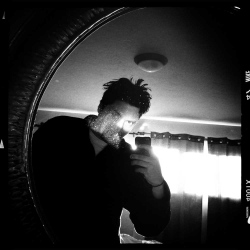
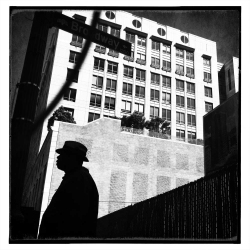
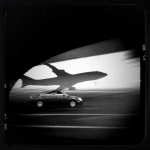
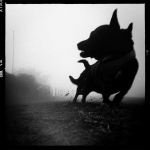
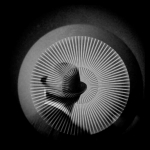
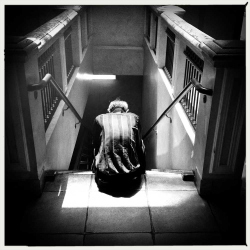
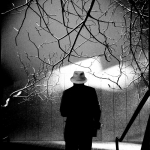
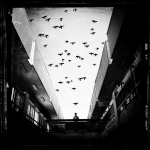
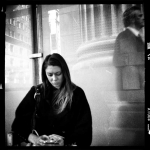
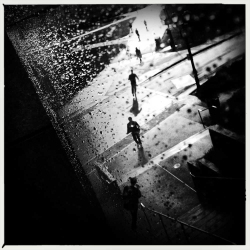
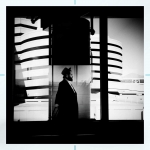

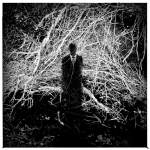
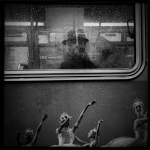



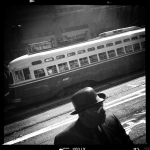
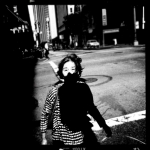
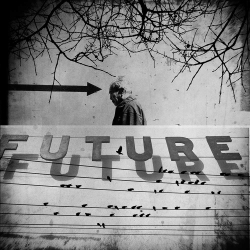
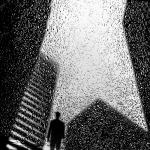



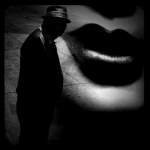

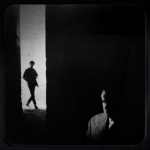
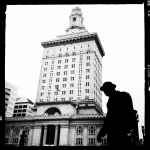
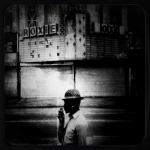
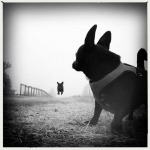
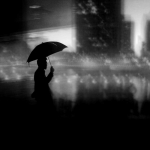
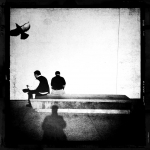
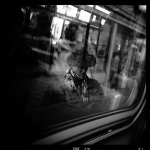






5 Comments